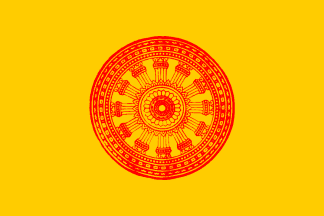Buddha

Siddhattha Gotama (563–483 BCE) was born as a prince in ancient India more than 2,500 years ago, his father was the leader of the Shakya republic in Ancient India. Even though Siddhattha’s family was wealthy and he lived in great comfort, he was affected by human frailty: the suffering experienced with birth, growing old, sickness and death. He saw sensual pleasures to be fleeting and unsatisfactory. He renounced the world at the age of 29 to lead an ascetic life, determined to find a way to escape all suffering and to secure lasting happiness. Siddhattha practiced meditation and extreme asceticism for six years without finding liberation until he changed tactics to practice the Middle Way between the extremes of sensual indulgence and self-mortification. This resulted in the attainment of enlightenment: spiritual knowledge or insight into the nature of reality; cessation and complete removal of greed, anger and delusion; and the experience of perfect peace and happiness.
After enlightenment at the age of 35 Siddhattha called himself the Buddha, The Awakened One. The Buddha had compassion for those that were suffering while caught in the cycle of rebirth, and taught the path to supreme peace, freedom and happiness during the remaining forty-five years of his life. His teachings known as the Dhamma, describe the nature of reality and the path of practice to realize enlightenment. The Buddha established the fourfold Saṅgha or assemblies, which include monks, nuns, laymen and laywomen. The monastic Saṅgha are for people dedicated to the practice and preservation of the Buddha’s teachings and path of practice consisting of virtue, concentration and wisdom. Laymen and laywomen also study and practice the Buddha’s teachings and help support the monastic Saṅgha.

